Stress, fear, anxiety – these moments of life are impossible to quantify. Anxiety about your parents’ reaction to a board exam or a book of progress, or the discomfort before a job interview – we’ve all experienced this moment in life. A little fear is natural, in fact, like salt in a meal, this fear is essential in life, which keeps us disciplined, focused and dynamic. The problem begins when this fear lasts for a long time and it begins to interfere with everyday life. It then turns into an anxiety disorder, which means intense anxiety or fear of the unknown. In such cases, treatment is needed and yoga is very helpful in this.
It is important to know that yoga is not the only treatment option, but that yoga should be used to supplement proper treatment with the advice of doctors or experts. The doctor will guide you better on the condition of the illness and help you understand the type of anxiety disorder. Regular yoga practice helps you to stay calm and stress-free in your daily life and gives you the strength to cope with future events. The yoga instruments, which include a wide range of postures such as asana, pranayama, meditation and ancient yoga philosophy can be used to help many unhealthy patients and to bring life to new poses and strengths. Make physical movements with relaxation and relax your mind
These yoga postures help yoga to achieve a happy mind and a healthy body. Asanas help to relieve stress and negativity through the body and mind.
- Dhanurasana
- Matsyasana
- One-Legged Forward Bend
- Marjariasana
Knowledge of ancient yoga, which mentions some of the commonest but most profound yoga principles (yams and rules), and applying it in daily life, can be the secret to a happy and healthy life. “Satisfaction”, for example, teaches the importance of contentment. The “indifference” principle helps us to overcome greed or the desire to gain more, which can be a cause for stress and anxiety. Also, “defilement” speaks of the principle of the cleanliness of body and mind. This rule is especially useful when you are worried about an infectious disease.
How to do Dhanurasana
- Sleep on the stomach with a slight gap in the foot. Let the hands be under the body.
- Folding the hands through knees, touch the palm of your legs
- Breathing, lift your chest from the ground and push your legs up and back.
- Look straight. Keep a smile on your face. Let smiles grow as the body builds up.
- Standing in the final position, keeping an eye on the breath. Your body is rigid like a bow.
- Take a deep breath, relaxing in this position. But don’t stress too much.
- After fifteen to twenty seconds, bring your feet and chest to the ground, exhaling. Relax on the knees.
How to do Matsyasana
- Sleep on the back, ensure that both the feet are together. Let us rest both hands comfortably with our body.
- Let the palms of both hands be below your buttocks that touch the ground. Look, both corners are near each other.
- Breathe in and lift the head and chest.
- Keep the chest in place and bend the back of the head to the ground.
- When the head is lying on the ground, lift the corners on the corners without hitting the ground. Lift the shoulder blades and chest up in the distance. Hands and feet are on the ground.
- We will keep this posture as long as possible. Let us rest in the seat with each exhaled breath.
- Now, lift your head, take your chest down, take your hands under your buttocks and hold it with your body and rest your whole body on the ground.
How to do One-Legged Forward Bend
- Let the spine tighten and leave both feet long in front.
- Now fold the left leg and place it near the right thigh. The left thigh should stick to the ground.
- Breathe in. Let both hands be on the head, lean up, turn the body slightly from the hips to the right.
- Exhale and exhale, keeping the spine tight and leaning forward toward the chin.
- If possible, hold the palm in hand and keep the elbows facing the ground.
- In the final position, let us hold steady by taking a deep breath.
- Let us get up, take out our breath, lower our hands to the side.
- Let’s return the seat on the other side.
.
How to Do Marjariasana
- Stand with your knees and hands on four legs like a cat. Make a table so that your back is the top of the table and your arms and legs will be the legs of the table.
- Place your hands vertically on the ground, hands should be down along the shoulders, and palms of the hands should be flat on the ground; the width of the buttocks should be spaced between both knees.
- The sight should be kept straight in front.
- As you inhale, lift the chin and head backwards, push your navel downward, and raise the tail.
- Stay in this cat’s sac for a while and take a deep breath.
- Position the opposite of the position you are in now. As you exhale, bring the chin to the chest and lower your back to your ability; loosen the buttocks. Try to stay in this position for a few seconds and then return to your first table position.
- Do this five or six times before exiting this yoga practice
- Yoga and rules of yoga help us to eat nutrients and lead a healthy lifestyle, which helps to overcome anxiety and stress.
About The Author
Vivek Roy is an enthusiastic Yoga blogger and Traveller from India. He has done 200 hr yoga teacher training Rishikesh. He loves to travel and share the knowledge of yoga around the world. For more information about him visit his website Sattva Yoga Academy.


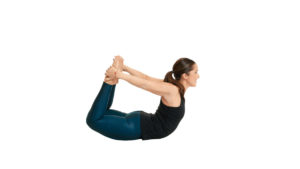
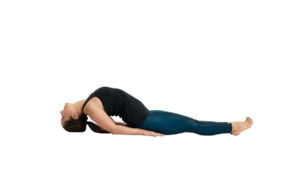
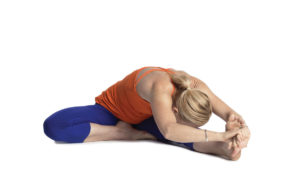
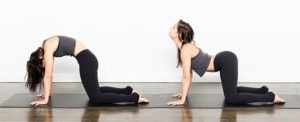

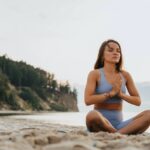

2 Comments
Yoga helps to achieve your mental health and your metal stability. Thank you for sharing the informative article.
We’re so happy you enjoyed our article! Yes yoga is amazing for that. Enjoy your yoga practice!